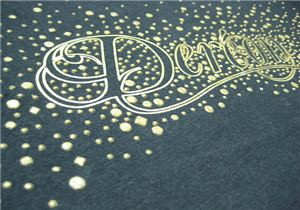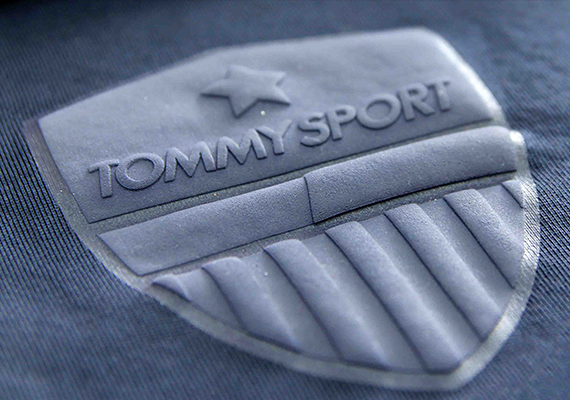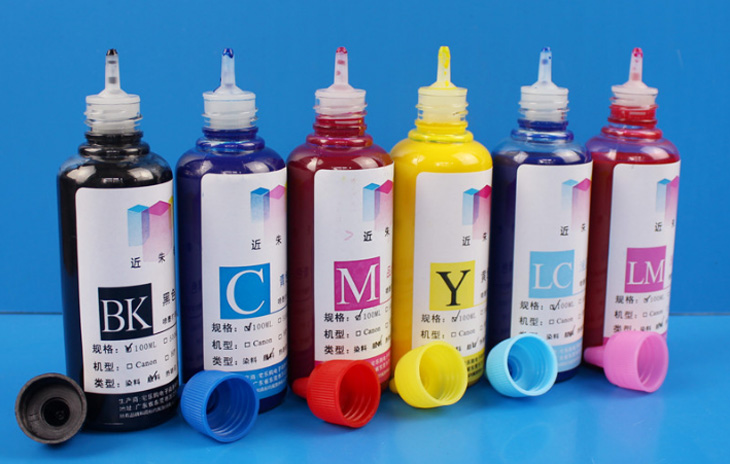Heat transfer printing is the latest technology using high temperature and dyes in solid state to provide quality and durable colors. Its distinction is that it does not pring directly on the substrates but rather, on a specially designed paper before pressing it onto the substrate’s surface. By using specialized inks, ths technology could be applied on different surfaces like plastic, ceramic, brick, etc.
.jpg)
Heat transfer printing is used for garments and advertisement products.
How heat transfer printing works?
Heat transfer printing first emerged in 1981 at Japan’s SATO Corp. To date, this technology has really developed with many lines of printing machines that bring about outstanding image quality.

Heat transfer printing provides standard images as per design.
Heat transfer printing machine possesses a modern, rapid and efficient operating regime. The heat injector helps evaporate the inks directly from the specialized heat transfer paper. The inks are always sprayed correctly in terms of volume and color. Once the ink cools down, it hardens on the paper and create the designed color.
The last thing to do is to use the heat pressurizer to transfer the image from paper to the substrate’s surface. This is the decisive part for product’s final quality. As such, operators need to take utmost care in terms of materials and skills.
Supplies for heat transfer printing machine
To keep the heat transfer printing machine operating smoothly, the required supplies need to be in constant stock: heat transfer inks, heat transfer paper and heat pressurizer.
Heat transfer inks

Not any ink could be used for heat transfer printing because several types would provide the wrong color and not ensure quality at high temperature. Inks from InkTec, Epson and Sublimation are the 3 specialized heat transfer inks today. They are developed for this purpose only and guarantee the most natural quality and durable colors.
For each surface material, there are different heat transfer papers. On hard surface like ceramic, brick, glass or wood, etc., clients should select the right heat transfer paper. To soft materials like textile and bright color, it is necessary to use light heat transfer paper. Besides, dark heat transfer paper is also suitable for dark textiles
Heat pressurizer
Heat pressurizer is a component that complete the heat transfer printing line. It helps transfer the color from paper to the substrate’s surface quickly and efficiently. Depending on material and form of the product that manufacturer would select the suitable pressurizer.
Finding a reputable and quality heat transfer printing establishment in Ha Noi
Kim Hoang Manufacturing and Trading Co.Ltd. prides itself as among the top heat transfer printing providers in Viet Nam. With long-established experience in this industry, we are committed to meet all clients’ needs.
.jpg)
High capacity heat pressurizer at Kim Hoang Co.Ltd.
At Kim Hoang Co. Ltd., all products are manufactured in technological line meeting international standards. At the same time, we also employ a rich, young and experienced pool of technical staffs to ensure clients’ satisfaction. At our company, all products and services are offered at the most competitive and reasonable quotes.
Heat transfer printing at Kim Hoang Co. Ltd. brings about colourful, quality and durable products.
How to peg print on textile?
Should you prefer your garments having peg prints on, this is what you should read.
Peg printing ink: this is a technique used in apparel printing to create raising designs on garment surface. To have non-imitable genuine and highly aesthetic products, sometimes other techniques or additional substance could be applied. Method of ink mixing: blend ink, thickener, plasticizer, binder and emulsifier to a smooth and even mixture.
Making raised letters and images: the ink bubbles created during baking or drying thanks to the ink components used to print raised letters or designs. It is possible to create such designs as the products could transform the plastic or natural rubber into a bubble form during baking.
A formula for reference:
830g Lutexal HSD thickener
30g Lupritol 4053 emulsifier
10g Dibutyl tfala plasticizer
100g Ryudye binder.
30g pigment color.
Raised design creation for garment textile decoration
First of all, textile is submerged in a plastic emulsion, pressed and then dried. Later, it is further pressed by hot rollers bearing certain designs at 140 – 1,500 ºC. The plastic turns into a coating thanks to the pressure power and heat, creating the raised patterns on the textile.
Drying and post-printing processes: After printing, the products are dried before baking in an saturated humidity environment at 130 - 150ºC or heat processed at the same temperature. Such processes are expensive and as such, heat pressurizer is the optimum choice.




Please enter information content comment